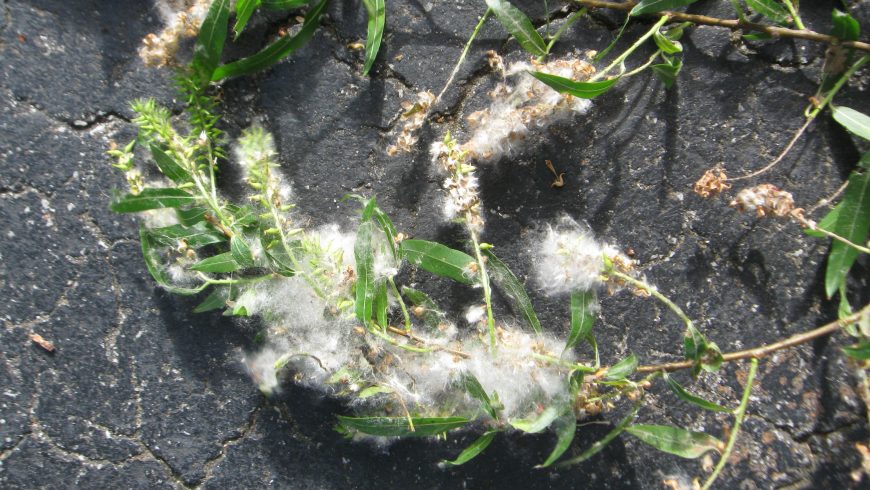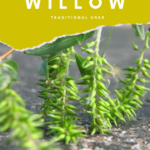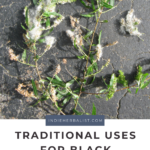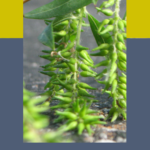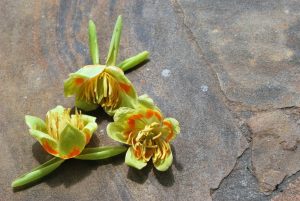Links contained in this post and elsewhere on my website may include affiliate links. When you make a purchase through these links, I earn a commission at no additional cost to you. I only link to products and services that I love - and that I think you will love, too!
Willow trees have long been used in healing, and there are many traditional medicinal uses for willow. When most herbalists turn to willow, they reach for white willow, Salix alba, which is easy enough to find at health food stores. Otherwise, the word ‘willow’ typically conjures up images of the graceful landscape tree with long, trailing branches. That would be weeping willow, Salix babylonica. Very few people are aware of our native willow species, black willow (Salix nigra) or its herbal history.
Black willows are less dramatic in appearance than familiar, flamboyant weeping willows. Still graceful, black willows are more upright and slender. They love to keep their feet wet, and the ones I spend time around have grown up among white oak, tulip trees, maples and sweet gums in an area near a small creek.
Medicinal Use of Willow in Historical Accounts
Although it isn’t much used by herbalists now, black willow was used by the Eclectic physicians. It appears in several of their materia medicas and reference books. King’s American Dispensatory and The American Materia Medica both contain entries about black willow. This reference from the late 1800s and early 1900s is worth a read if historical herbalism interests you!
King’s American Dispensatory
According to King’s American Dispensatory (1898), the bark, root and aments (the long, drooping clusters of flowers) of black willow were all used for medicinal purposes.
Similar to white willow, the bark of black willow contains salicin and tannins. In the early 1900s, black willow appeared in poultices for gangrene and ulcers, and as an ingredient in cream for rashes caused by poison ivy.
The root was used as a bitter tonic, taken internally for intermittents. This indicated a febrile diseases where the fever occurs in a cycle at the same time of day or in a reoccurring pattern over weeks or months. As a bitter tonic, it was useful for asthma and gout.
Black willow as an anaphrodisiac
Interestingly, the aments are the preferred preparation of black willow. This is very different than white willow. Bark is the main ingredient from white willow. The aments, like the bark, are traditionally cited as being beneficial for gangrene. However, their main use seemed to be as an anaphrodisiac. Considering the historic period in which the Dispensatory was written, we find such language as
“. . .it is especially adapted to the disorders of the sexually intemperate male or female, and of the youth, subject day or night to libidinous suggestions and lascivious dreams terminating in pollutions. . .”
The Dispensary goes on to amend that:
“Not only does Salix nigra act as a check to sexual passion and misuse, but it proves a useful tonic and sedative to many conditions following in the wake of sexual intemperance, among which may be mentioned spermatorrhoea in its varied forms, and prostatitis, cystitis, and ovaritits.”
All of which would strongly suggest that, Victorian prudishness aside, the herb has an effect on the central nervous system, and also that it has cooling actions in the body with an affinity to the reproductive organs.
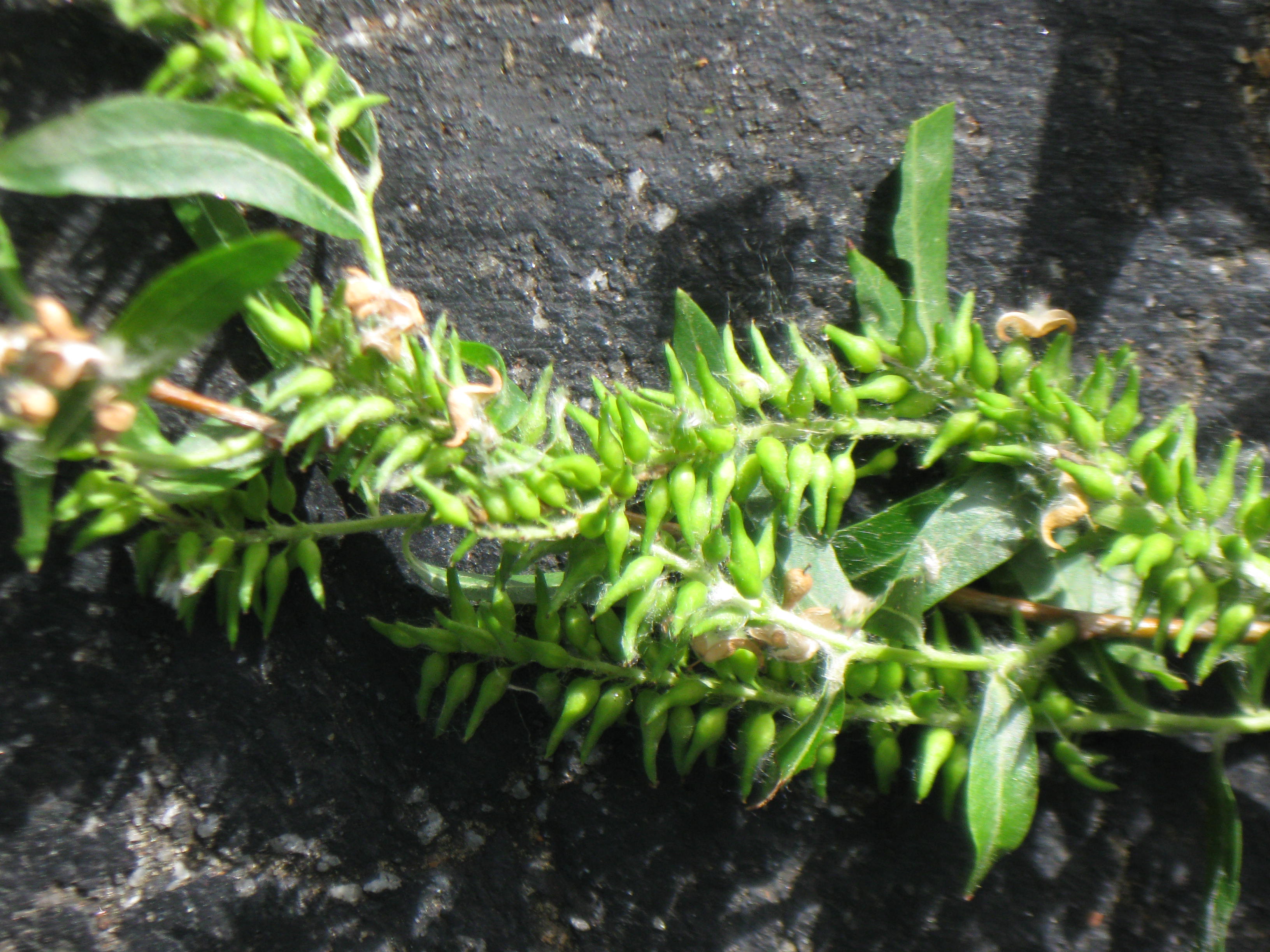
The American Materia Medica
In fact, Ellingwood, in The American Materia Medica (1919), had this to say about black willow:
“It will exercise a direct and satisfactory influence in many cases of hysteria, overcoming the extreme excitability and nervousness, headache and the globus hystericus, and will permit quiet, restful sleep. It will serve an excellent purpose in these cases in combination with general nerve tonics and restoratives, greatly enhancing their influence.”
So it looks like it could be a very useful herb to add to nervine blends or central nervous system tonics. Ellingwood also mentioned the use of the aments as opposed to the the bark.
A Modern Note on Willow Uses
Peterson Field Guide to Medicinal Plants and Herbs states willows hybridize very easily and species are interchangeable. I would suggest that this is true to an extent. However, as the Eclectic sources note above, I think it’s probably reasonable to say that there are still some uses specific to black willow.
Summary of Potential Black Willow First Aid Uses
Below you can find a summary of the uses for black willow that turned up when I was researching. I’ve organized it by parts used.
Bark
- topical for gangrene and sores/ulcers
- eczema
- topical for poison ivy
- fevers, sore throat, laryngitis
- rheumatism
- gout
- neuralgia
- heartburn
- dysentery
Leaves
- poultice for sprains, bruises
- poultice for sores
Aments
- nervine tonic
- excitability and anxiety
- sleep aid
- cystitis
- inflammatory disorders involving the ovaries or the prostate
Root
- chewed for hoarseness
- as a tea for intermittents
- for gout (as a tea)
- as a tea for asthma
Cautions and Considerations
Don’t give willow to children or teens who have a fever caused by a virus or who are recovering from a viral illness. A link between Reye’s syndrome and aspirin use suggests that willow is possibly unsafe for children. This is because willows contain salicylic acid (aspirin is acetylsalicylic acid).
More native tree lore
Interested in learning more about native trees and their herbal uses? Read How to Forage and Use Tulip Tree Bark.
References
The Earthwise Herbal: A Complete Guide to New World Medicinal Plants by Matthew Wood
Peterson Field Guide to Medicinal Plants and Herbs of Eastern and Central North America by Steven Foster and James A. Duke
The American Materia Medica, Finley Ellingwood M.D., 1919
Kings American Dispensatory, Harvey Wickes Felter M.D. 1898
